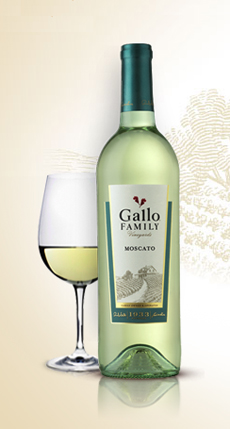What Is Moscato Wine? Try A Bottle!
|
May 9th is National Moscato Day. Nearly two thousand years ago, the Roman author Pliny the Elder (23 C.E. – 79 C.E.) wrote in his Natural History: “The Muscat grape has been grown for a long time in Beaumes [in France] and its wine is remarkable.” Call it Muscat in French or Moscato in Italian: Today is the first National Moscato Day, celebrating the “remarkable” wine. The holiday was declared by Gallo Family Vineyards, producers of excellent and very affordable Moscato. By establishing National Moscato Day, the Gallo family hopes that you will raise a glass and get to know this delicious wine. The wine is already on a roll: Moscato sales in the U.S. continue to grow faster than any other wine varietal, increasing by 74% in 2011 alone. You can pick up a bottle of Gallo Moscato for about $5.00. How can you resist? Note that Gallo makes Moscato in red, white, and pink (as do other producers). At these prices, try them all! TIP: If you don’t like any particular wine that you’ve purchased, turn it into a cocktail by adding gin, tequila, or vodka. > Check out 13 food pairings, below. ________________________ *The Gallo Moscato is so inexpensive because the grapes are grown in Australia, where land is plentiful and cheap. |
The next time you want a glass of white wine, reach for the Moscato (photo © Gallo Family Vineyards). |
|
|
WHAT IS MOSCATO WINE? Moscato (mow-SKAH-toe) or Muscat (MOO-skaht) is a white wine grape. The wines, slightly sweet and low in alcohol, are often served with dessert. However, their ability to pair with other foods—and Americans’ penchant for sweet beverages like soft drinks and White Zinfandel—is bringing Moscato to the forefront in the U.S. Moscato History According to Uncork.biz, the Muscat grape is the world’s oldest cultivated grape variety. It may have originated in the sultanate of Muscat and Oman† on the southeast Arabian Peninsula. The Muscat grape found its way to Rome and was brought by the Roman Legions to Gaul (encompassing present-day France). Over the centuries, it was planted in regions as disperse as the Crimea (Russia) and South Africa. Early Spanish and Italian immigrants brought it to America. In 1844, it arrived in Australia—the source of the grapes for the Gallo Family Muscato. The Moscato grape is widely grown in Italy, where it is vinified into still and sparkling wines. Asti Spumante and its semi-sparkling cousin, Moscato d’Asti, are made in the Piedmont region, the northwest corner of Italy. Moscato is light-bodied and low in alcohol—meaning that most people can have a second glass without overdoing it. The wine’s perfumed nose and lush palate burst with the seductive flavors of peach, honey, and citrus. The fresh acidity and delicate sweetness enable it to pair well with a broad variety of foods. †Muscat and Oman was a country that encompassed the present-day Sultanate of Oman and parts of the United Arab Emirates. |
||
 Moscato with a dessert of fresh fruit and a mascarpone dip. Photo courtesy Wisconsin Milk Marketing Board. |
13 OPPORTUNITIES TO SERVE MOSCATO
|
|
|
|
||
